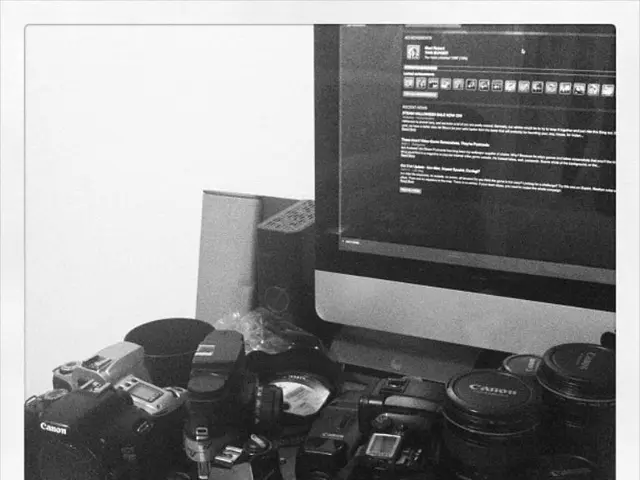Sony Electronics Upgrades 3D Spatial Reality Viewing Devices without requiring glasses
In a significant stride for the digital content creation industry, Sony Electronics has unveiled the ELF-SR2 and ELF-SR1 Spatial Reality Displays, offering realistic 3D content without the need for special glasses or VR headsets. This innovative technology is set to revolutionize the way users experience and produce 3D animation.
The Spatial Reality Displays, in conjunction with the enhanced plug-ins, promise a more intuitive and effective creative process. The increased precision in 3D animation production, made possible by Autodesk Maya, is a testament to this.
The updated Spatial Reality Display Player version 1.1 brings several improvements for exhibitions and presentations. Features such as model background setting, demo function, and background music functionality aim to provide a more engaging and interactive experience.
The latest version of the Spatial Reality Display Plug-in for Preview is designed specifically for showcasing 3D data on spatially immersive displays. This plug-in supports not only Autodesk Maya but also other popular software like Autodesk 3dsMax, ZBrush, and Blender, broadening its appeal to a wider user base.
For software developers involved in spatial content creation, particularly those using Sony's XYN suite, the SDK updates offer a significant advantage. Real-time, glasses-free monitoring of 3D content and workflows in film, animation, gaming, digital twins, and virtual production is now possible, enhancing both visual fidelity and production efficiency.
The SDK version 2.3.0 update by Sony has added compatibility with OpenXR (OpenGL and DirectX12), expanding DirectX11 support. This increased compatibility with existing OpenXR-supported applications allows for a seamless and efficient application development experience.
Moreover, the updated Spatial Reality Display Player and the SDK version 2.3.0 enhance the range of use cases for Spatial Reality Displays in various scenarios. Users can now install the Spatial Reality Display vertically using VESA-compatible monitor stands, providing enhanced versatility for exhibition purposes.
The plug-ins also enable stereoscopic display of 3D data, improving the assessment of intricate curves, complex structures, and the creation of smooth animations. This feature, coupled with the ability to mount the Spatial Reality Display on walls or embed it vertically into fixtures, opens up new possibilities for creative expression.
The release of the source code for the Spatial Reality Display Plugin for Preview (BL) on GitHub encourages community collaboration and innovation for the Spatial Reality Display. The source code can be used to add features and improve usability, fostering a dynamic and evolving ecosystem around this groundbreaking technology.
In conclusion, the combination of Sony's Spatial Reality Displays and the enhanced plug-ins is set to contribute significantly to higher efficiency and quality improvement in 3DCG production. The exploratory potential during 3D content creation, facilitated by the plug-ins, is set to redefine the boundaries of digital content creation.
Read also:
- Rachel Reeves conducts a discussion with Scott Bessent and financial executives, focusing on investment matters
- iPhone, iPad, and Mac Apple Sports App Now Offering: Customizable Widgets
- Football Spectators Embrace On-Field Purchases and Social Interaction During Game Time
- Exciting Activities and Productive Tasks You Can Perform on Any Personal Computer







